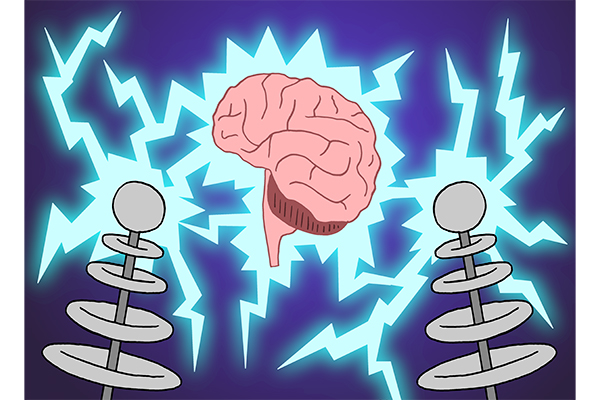UT’s Dell Seton Medical Center is the first place in Texas to offer deep brain stimulation as a treatment for epilepsy patients.
“Deep brain stimulation, in general, is the idea of injecting electrical current into the brain and, in the context of epilepsy, it’s designed to control seizures,” said Andrew Watrous, neurology professor at Dell Medical School.
Deep brain stimulation for epilepsy is a neurosurgical procedure that places a device under the skin. This device sends electrical impulses to surgically implanted electrodes within certain areas of the brain, said Pradeep Modur, director of the comprehensive epilepsy program at Dell Seton Medical Center.
Robert Buchanan, the chief of neurosurgery at Dell Seton Medical Center, was the first surgeon in Texas to perform the deep brain stimulation surgery for refractory seizures, or seizures that cannot be controlled with medication.
“Seizures are an abnormal buildup and surge of electrical activity,” Buchanan said. “If you’re able to infuse electricity into a system that has abnormal electrical activity, sometimes you can suppress the electricity by overriding it. That’s how deep brain stimulation works.”
After surgery, patients at Dell Seton are overseen by Modur, who helps individualize the device settings for each patient and manages the patients long-term.
“Deep brain stimulation has been around for a long time and has been used to treat movement disorders like Parkinson’s Disease,” Modur said. “Just last year, it was approved by the FDA as a treatment for epilepsy.”
Buchanan said epilepsy patients who come to Dell Seton for deep brain stimulation will come to their comprehensive epilepsy center where cases are looked at by epilepsy specialists.
“We have the busiest comprehensive epilepsy program in the region,” Buchanan said. “It’s a group of physicians, psychologists, social workers, technicians that come for conferences every week, and we come up with a comprehensive treatment plan for that patient.”
Buchanan said the gold standard of epilepsy treatment, surgically, is to remove the brain areas causing the epilepsy. However, sometimes these regions of seizure generation are in areas of the brain that can not be removed safely, such as areas controlling movement, speech or sensation.
“Patients that we’re now placing deep brain stimulation in had no hope,” Buchanan said. “Deep brain stimulation has added a whole new weapon for us to fight epilepsy.”
Buchanan said the physicians at Dell Seton Medical Center and Dell Medical School are trying to push the envelope in the neurosciences.
“The physicians here are always looking for latest treatments and developing treatments,” said Buchanan. “If you want cutting-edge treatments, the best place to get it is here at the Dell Seton Medical Center and on our medical school campus.”





















